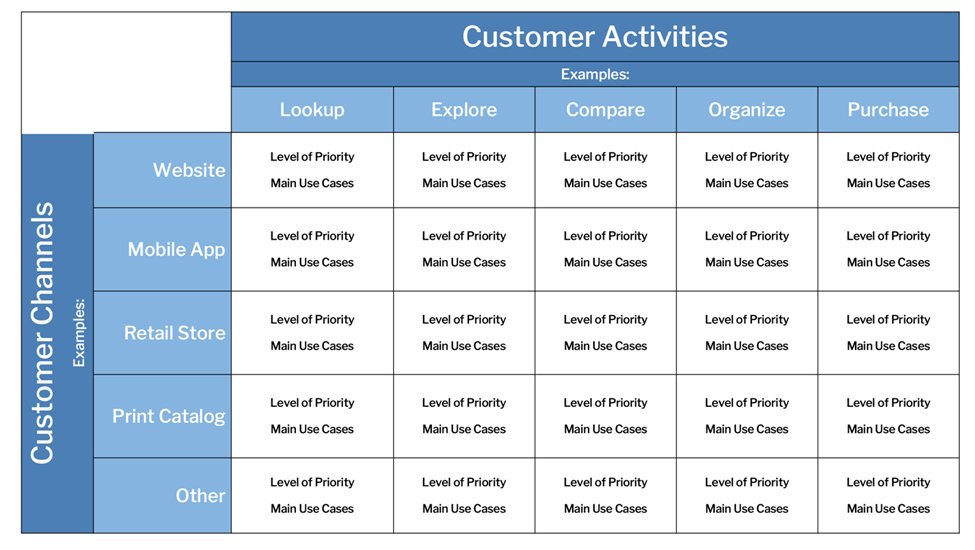
Cross-Channel Blueprint
Identify the level of importance and the specific roles that different channels play for your customer at each phase of their journey.


Identify the level of importance and the specific roles that different channels play for your customer at each phase of their journey.

Describe how your new product, service, or feature will work through a fictional story about the person using it.
This is a project from Kickframe – a digital marketing strategy consulting and training company.